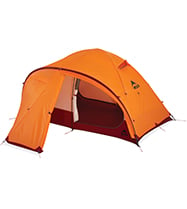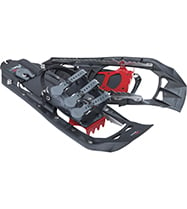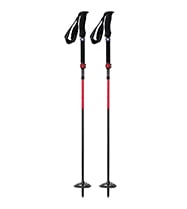How to Find a Compatible Backcountry Ski and Snowshoe Partner
I thought I had clearly communicated which slope I wanted to avoid. It had dumped snow the night before, I was in an unfamiliar area, and I wanted to play it safe that day. So when my backcountry ski partner headed straight for the steeper line, I was furious. After he committed, I had to follow him or risk losing him in the forest.
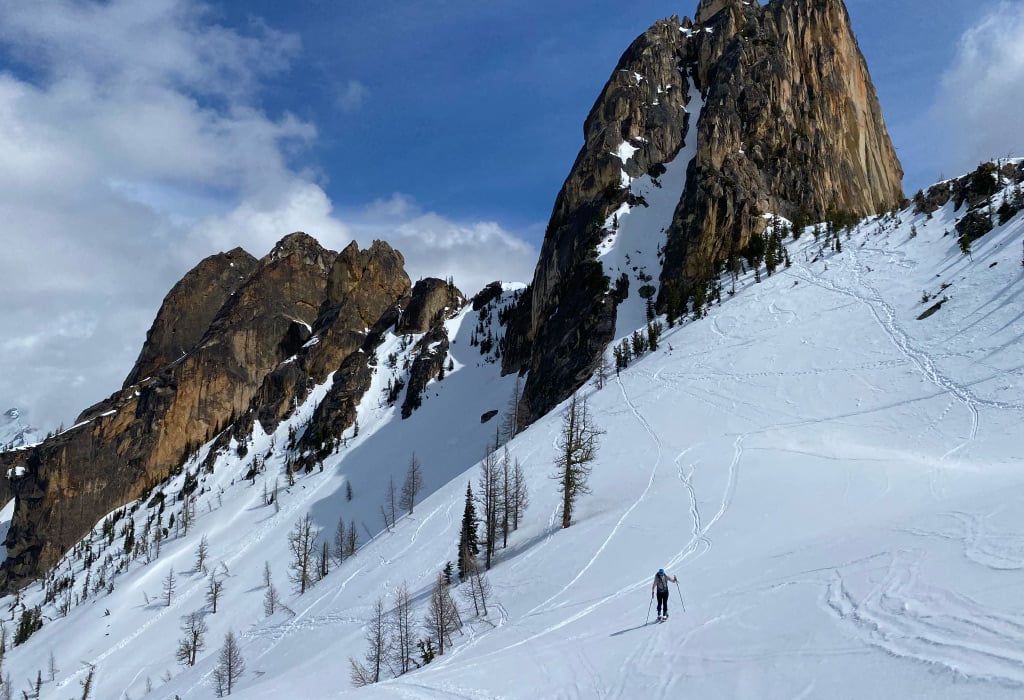
Sound familiar? Solid adventure buddies can make or break a trip in any season. During the summer, we might be crammed in a tent with them for hours, as we await a weather window or escape a swarm of mosquitoes. We have to solve problems, resolve conflicts, and make decisions together in remote settings. They share our highest highs and lowest lows, high fiving us on the summit or cheering us on during a descent with blistered feet.
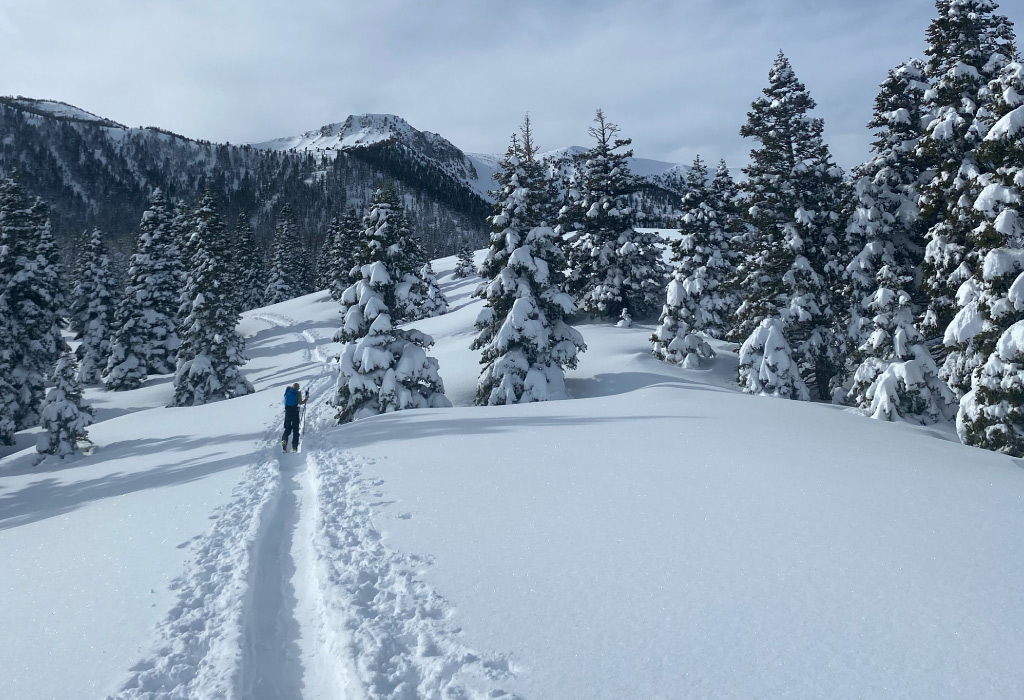
Different Risks for Backcountry Skiing and Snowshoeing
As the seasons change and snow starts to fall, there are new factors to consider as we head into the hills. One of your favorite hikes during the summer may lead straight into an avalanche path once it’s filled with snow. The consequences of getting hurt in the backcountry increase when the temperatures dip below freezing. On top of a primary injury, cold exposure amplifies the severity of any accident.
When venturing into backcountry terrain during the winter, your outdoor recreation partners can directly affect your safety and ability to manage risks. If you like to backcountry ski, splitboard, or snow-shoe, finding compatible touring pals can be a challenge. We’re here to spell out the essential attributes to look for in your next winter adventure buddy. Hint: they’re all traits you should develop in yourself too!
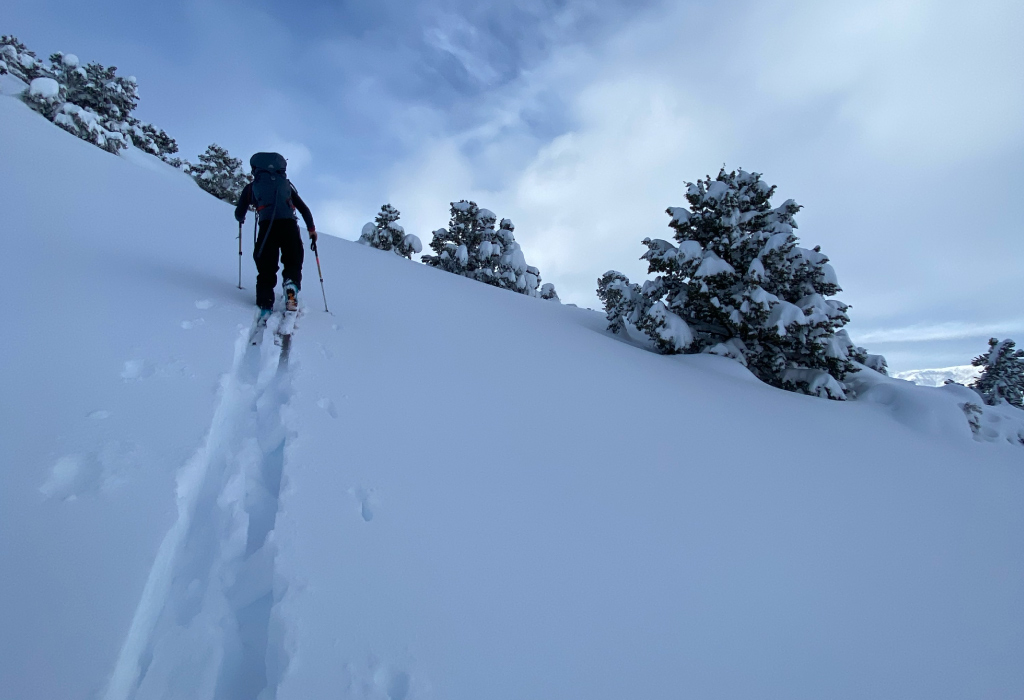
Do They Know Their Stuff?
You don’t have to be an extreme skier to slide down snowy slopes outside of ski resort boundaries, but having a baseline understanding of managing avalanche risk is essential. A Level 1 Avalanche Training Course is a good start; make sure your new ski partner (and you!) have completed this before skipping the lift lines and heading into the backcountry.
On a Level 1 Course, you’ll learn how to interpret the daily avalanche forecast, choose a good route for your tour, evaluate the snowpack, perform a rescue if your partner gets buried, and much more. But it’s not enough to check that box and move on. Maybe your partner took a course five years ago, but have they refreshed their skills with an Avalanche Rescue Course? Do they continue to analyze their decision-making and re-educate themselves, season after season?
Winter backcountry skills don’t end with avalanche education. If you blow out a knee six miles in, could your partner manage your injury and get you out of there? Ask your partner (and yourself!) if they have taken a wilderness medicine course, like Wilderness First Responder or Wilderness First Aid. Rescues in wintery terrain also look different from a summer backpacking trip. Before you’re deep in the mountains, it’s helpful to practice improvising a rescue sled and divide up emergency gear with your partners.
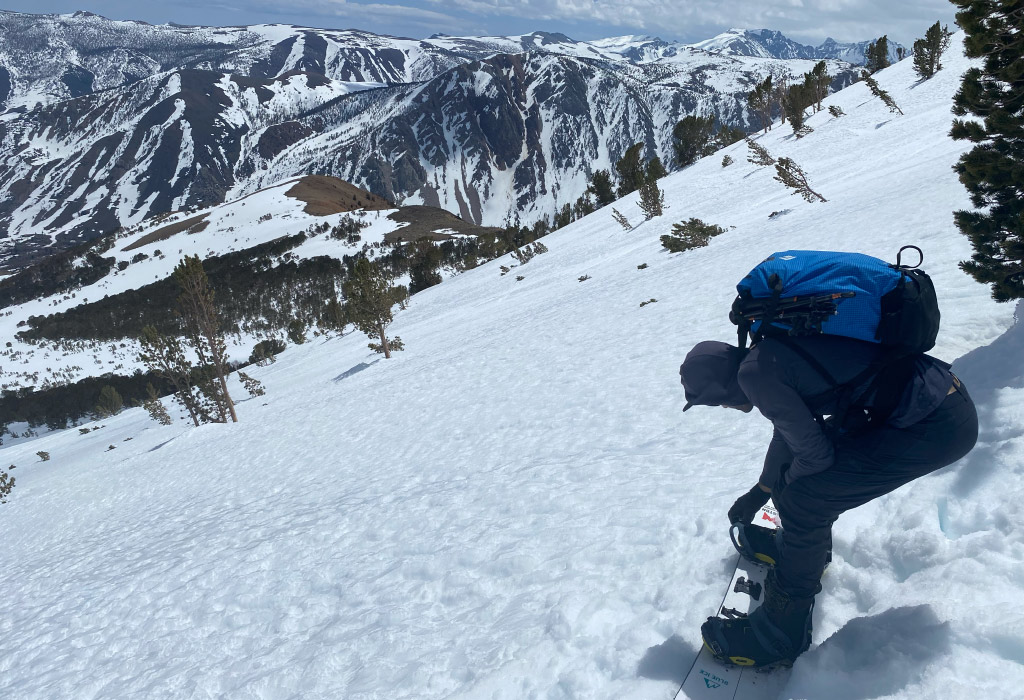
Are They Doing Their Research?
The makings of a great day in the backcountry start long before you’re skinning uphill. A great partner will reach out ahead of time, prepared to collaborate on a plan. Recon may start even before the snowflakes fly; knowing what the terrain looks like under the snow helps build awareness of hazards. As winter begins, tracking the weather throughout the season helps skiers and snowshoers get a sense of what is going on in the snowpack over time.
Checking the daily avalanche bulletin before heading out is bare minimum. Having a partner who writes down specific hazards and calls to talk it over with you is even better. Based on the forecasted risks, you can decide together which terrain might be off the table for that day before you get in the car. Then once you’re out in the snow, you can continue to assess the terrain together and make decisions based on what you find.
I once went on a ski tour with a friend who put in earbuds during the entire approach and didn’t check the map once; he just followed me blindly through the forest. While some might like being in control of navigation, I prefer to collaborate with my partner to choose our route as we go.
I also like to research route options with my partner in advance. Reading through guidebooks and trip reports and using mapping tools like Caltopo and Gaia GPS can help you create possible tour plans. Then, you and your partner can decide together which route is appropriate based on that day’s forecast. Just make sure to download your map before you lose service!
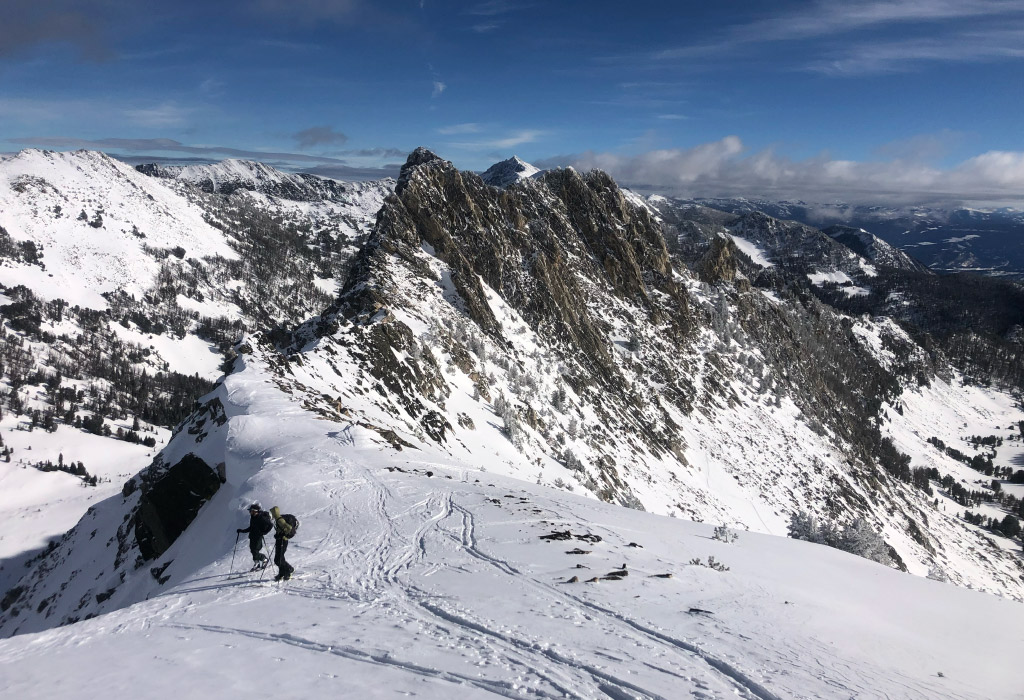
Are You Stoked on the Same Lines?
The great thing about outdoor recreation is that there is something for everyone. Some folks may enjoy winter by driving to a Sno-Park, building a snowman, and getting hot chocolate on the way home. Others may plan remote ski expeditions to pursue big lines down rugged peaks. Both are completely valid, totally incompatible ways to play in the snow.
Your new friend might be well versed in managing avalanche risks and regularly pour over guidebooks, just like you. You might both love to geek out on snow grain types and practice companion rescue every season. But if you prefer mellow days with great conversation and they are psyched on skiing as much vert as possible, you both might be disappointed.
A compatible ski or snowshoe partner is someone who wants a similar experience and is excited about similar goals. That’s not to say that a hard charging skier couldn’t flex a bit to enjoy a day out with a friend who is new to the sport. But it would likely be unsustainable for this to be the dynamic every time. Finding partners who have shared goals will help you meet one another’s backcountry adventure needs.

Do they seek thrills or play it safe?
You could check every box above and still find incompatibility when it comes to risk tolerance. Risk can be defined as the likelihood of an accident happening versus the severity of the consequence if it does occur. For example, the avalanche forecast may identify moderate danger of a large-scale slab avalanche. The likelihood of the slide may be medium, but the consequence could be catastrophic if you were caught in it.
It’s up to all of us to determine our level of risk tolerance when we plan outdoor adventures, any time of year. Risk acceptance doesn’t necessarily correlate with experience or skill; you may have twenty seasons of backcountry skiing under your belt but still only choose to travel in avalanche terrain when the danger is low.
The key is to communicate about risk tolerance with your partners before you’re standing on top of a forty-degree slope and the stoke is as high as the avalanche danger. Find people with whom you feel comfortable voicing concerns and who will be willing to bail if anyone in the party doesn’t enthusiastically consent to the plan.
These conversations can happen every step of the process. During your tour planning at home, you may decide certain slopes are “out” based on the avalanche forecast and your shared risk acceptance. When you get out in the hills and perform snow stability tests, you and your partner should keep checking in with one another about comfort levels and psych. Even after the day is over, debriefing what went well and how you can improve will further strengthen your partnership.
Do they bring good snacks? (And will they share?)
Nobody likes frozen Clif bars when you’re miles-deep in the snowy backcountry. Find yourself a partner who likes to swap their freshly baked cookies for your thermos of hot chocolate and hold onto them tight. There’s nothing that keeps stoke high on a big day of uphill slogging like sweet treats and generous friends.
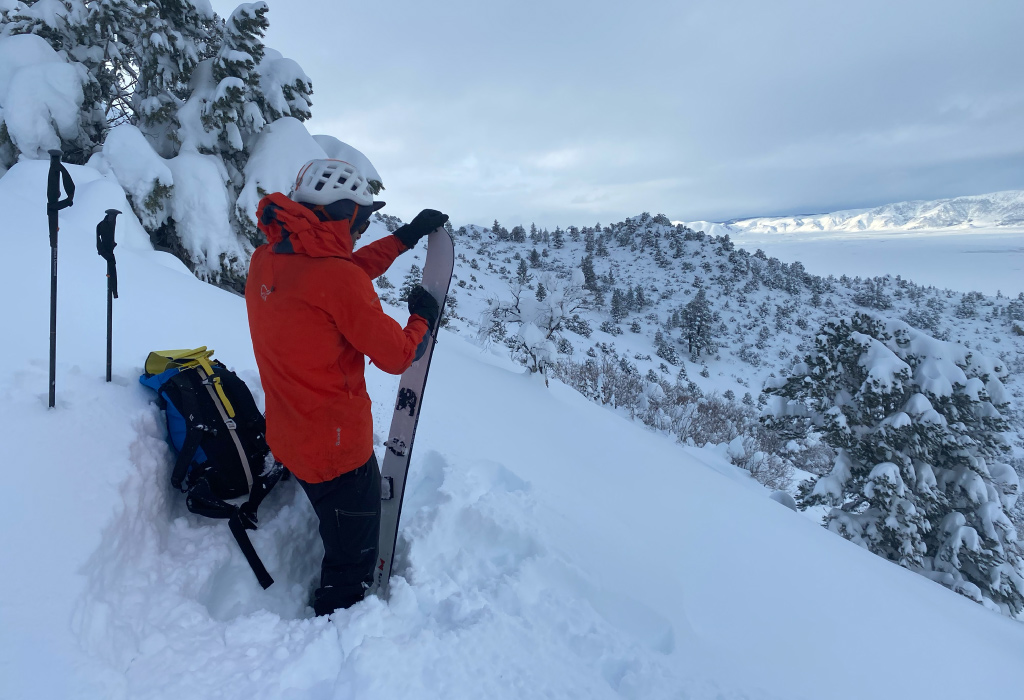
Build long-lasting backcountry partnerships
Last winter, I spent a few days touring in Mammoth Lakes after the Eastern Sierras had received multiple record snowfalls. Avalanche danger was considerable at all elevations. I have a low risk tolerance, preferring to wait for stable snow before traveling in avalanche terrain. But I’m also always happy to get out in the mountains and move uphill, no matter what the skiing looks like at the end.
My long-term ski partner knows that I’m a conservative decision maker. Before heading out, we got some recommendations from local friends who pointed us toward low angle, accessible slopes. We used CalTopo and an area guidebook to plan a route that would keep us completely out of avalanche terrain and avoid overhead hazards.
The next day, we looked at the weather forecast and checked back in about our plan. Throughout the day, we assessed the snowpack and made decisions together about navigating through the terrain. Finally, we enjoyed dreamy squiggles down fresh, low-angle powder, and immediately started planning our next tour when we got in the car.
Related Posts:
- Backcountry Dog Etiquette Tips for Winter
- Ski Mountaineering: Gear List & Tips to Get Started
- Strengthening Your Mind for the Winter Backcountry
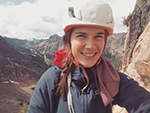 Written by Katie Griffith
Written by Katie Griffith


